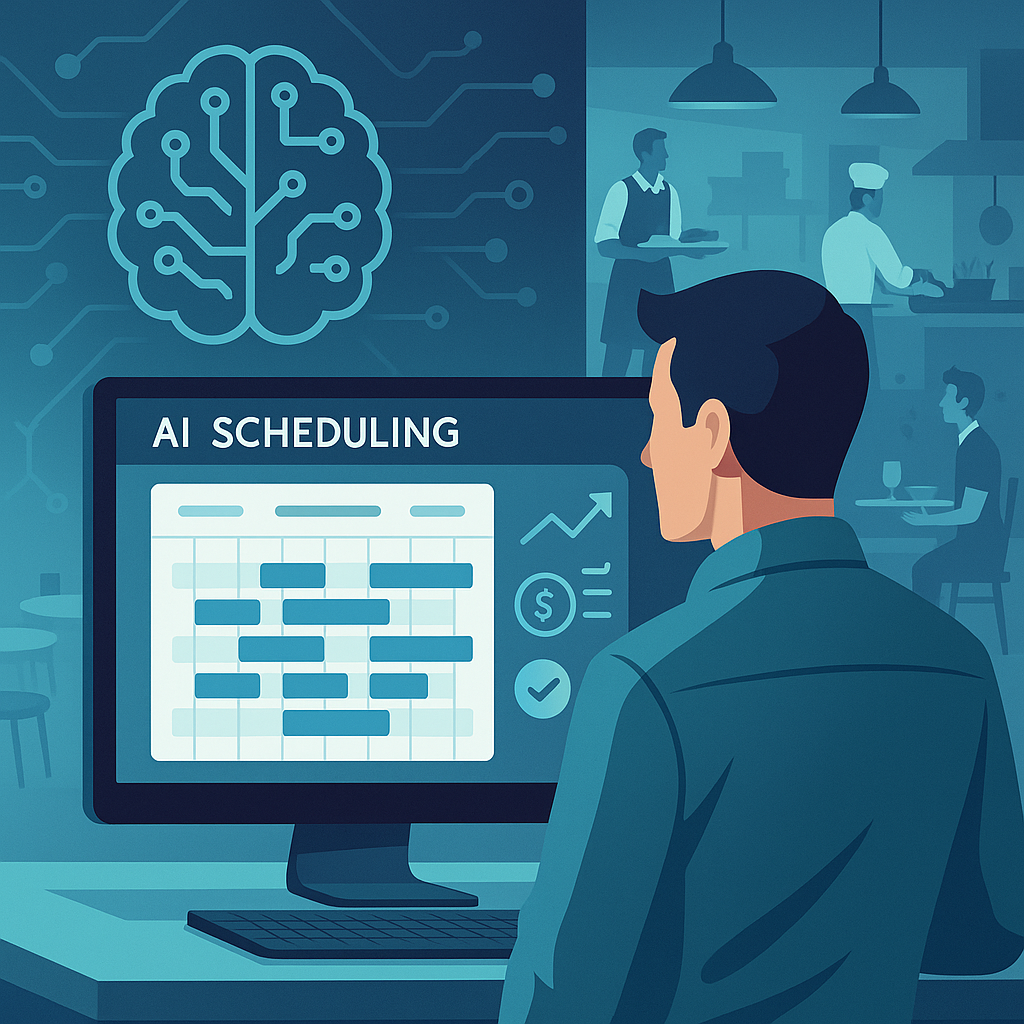Why Most Restaurants Are Still Getting Labor Wrong, And How AI Can Fix It
Restaurant labor remains a top challenge in 2025. Learn how Rightwork’s AI scheduling software helps optimize staffing, reduce costs, and boost profits.

Introduction
Labor costs remain the restaurant industry's most persistent challenge, with over 50% of operators naming it their top concern in 2024 (National Restaurant Association) Despite significant technological advances, most restaurants still grapple with chronic over- or understaffing, escalating costs, compliance hurdles, and high turnover.
However, recent breakthroughs in AI scheduling software are transforming how progressive operators optimize labor, boost profitability, and deliver stronger customer experiences. This article explains why labor management often falls short—and how AI-powered solutions like Rightwork Copilot are setting a new standard for restaurant labor optimization.
The State of Restaurant Labor: Persistent Pain Points
Even as turnover has moderated in 2025, restaurants continue to face tight labor markets, rising wages, and persistent scheduling headaches (National Restaurant Association).
Many multi-unit chains resort to short-term fixes, like compressing menus or increasing wages, but these rarely address the root causes of inefficiency. Managers remain stuck in manual processes, relying on gut feeling or incomplete data to schedule shifts.
Despite their best efforts, most restaurants lack the analytics, granularity, and automation to optimize labor costs at scale. Hourly turnover stabilizing has not slowed the pressure: 88% of operators plan to hire more if they can find talent.
88% of operators plan to hire more staff if they can find talent.
Why Traditional Scheduling Fails: The Data Gap
Restaurant schedules are notoriously difficult to get right. Managers must juggle sales forecasts, employee availability, legal compliance, demand fluctuations, and customer service goals.
Even experienced leaders often revert to last week’s schedule as a template, with little ability to anticipate demand surges or adjust for local events. This leads to chronic overstaffing during slow periods and understaffing during peaks, hurting both profitability and guest experience.
The absence of real-time data and predictive modeling is the key reason traditional approaches fall short—especially across multi-location groups where demand patterns vary widely.
How AI Scheduling Software Solves Restaurant Labor Optimization
Enter AI scheduling software. Solutions like Rightwork Copilot leverage machine learning to forecast demand, optimize shifts, and reduce labor costs—all while improving compliance and employee satisfaction.
Predictive Demand Forecasting
AI solutions analyze years of historical data, demand trends, weather, and local events to generate highly accurate traffic predictions down to the hour. This enables precise scheduling that matches staffing to actual demand, drastically reducing guesswork and manual errors.
Automated Shift Optimization
These systems automatically build schedules by balancing forecasted needs, employee skills, availability, wage rates, and legal requirements. For multi-unit operators, AI ensures consistent labor standards while accommodating store-level variation (Rightwork Insights).
Operational Agility
When demand spikes unexpectedly or an employee calls in sick, AI-powered systems can instantly suggest shift changes, send notifications to fill the gap, and maintain coverage—all without managerial chaos (Rightwork Copilot Case Studies).
Results: What Operators Can Expect
Operators deploying AI scheduling often report immediate 3-5% labor cost reductions, growing to 8-15% as the system learns.
Management teams typically reclaim 5-10 hours per week, while turnover declines as employees gain more predictable and fair schedules (Rightwork Case Study).
ROI is often achieved within two to three months as managers redirect time to guest service and growth.
Real-World Impact: The Rightwork Case Study
A leading multi-location restaurant group used Rightwork Copilot to overhaul its labor strategy across 16 locations.
By replacing manual scheduling with AI-driven, demand-based optimization, the company cut labor costs by 2%—translating to over $1 million in additional profitability.
Managers cited dramatic reductions in scheduling errors, improved compliance with predictive scheduling laws, and less time spent troubleshooting last-minute issues. Employee turnover also dropped, as more equitable and predictable shifts improved engagement and retention.
Beyond Cost Savings: Improving Restaurant Profitability and Team Satisfaction
- More Consistent Service. By matching staffing to demand, chains improve ticket times, reduce waitlists, and generate more positive guest reviews. Some operators report a 20-25% increase in positive service feedback after optimizing scheduling.
- Compliance & Risk Mitigation. Automated scheduling engines help ensure operators adhere to evolving predictive scheduling and labor compliance laws, which vary by jurisdiction and are a common source of costly fines (Brookings).
- Employee Retention. Predictable, fair, and flexible scheduling directly addresses the #1 driver of turnover. Operators who leverage AI to accommodate preferences and prevent chronic overtime report happier teams and lower recruiting and training costs.
- Unlocking True Profitability. Ultimately, labor moves from being a pure cost center to a strategic lever for maximizing revenue at every location. ROI is often achieved within two to three months—sometimes faster as management time is redirected to service, training, and driving growth.
Conclusion: The Future of Restaurant Labor Runs on AI
For restaurant leaders at large chains, optimizing labor is both the biggest challenge and the single greatest opportunity in today's operating environment.
Manual processes and historical averages can no longer keep up with the pace of change—especially as customer expectations, wage regulations, and market volatility increase.
Rightwork Copilot empowers COOs, Directors of Operations, and GMs to make data-driven decisions, enhance team satisfaction, and protect profitability regardless of macroeconomic headwinds.
Early adopters are already seeing measurable gains; for the rest, the path to labor optimization—and a more sustainable restaurant business—now runs through AI.